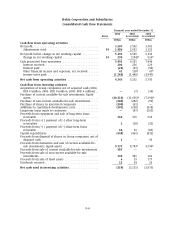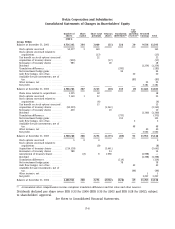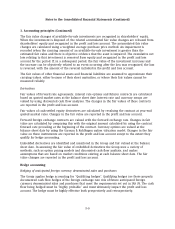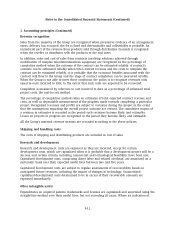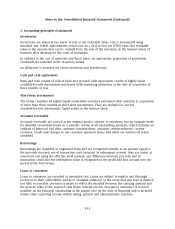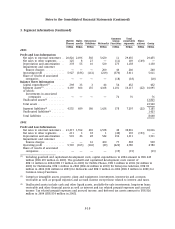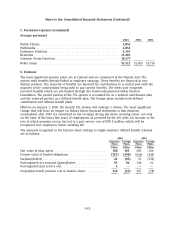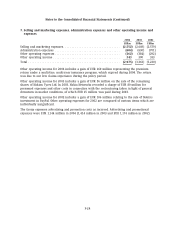Nokia 2004 Annual Report Download - page 139
Download and view the complete annual report
Please find page 139 of the 2004 Nokia annual report below. You can navigate through the pages in the report by either clicking on the pages listed below, or by using the keyword search tool below to find specific information within the annual report.Notes to the Consolidated Financial Statements (Continued)
1. Accounting principles (Continued)
Income taxes
Current taxes are based on the results of the Group companies and are calculated according to
local tax rules.
Deferred tax assets and liabilities are determined, using the liability method, for all temporary
differences arising between the tax basis of assets and liabilities and their carrying values for
financial reporting purposes. Currently enacted tax rates are used in the determination of deferred
income tax.
Under this method the Group is required, in relation to an acquisition, to make provision for
deferred taxes on the difference between the fair values of the net assets acquired and their tax
bases.
The principal temporary differences arise from intercompany profit in inventory, warranty and
other provisions, untaxed reserves and tax losses carried forward. Deferred tax assets relating to
the carry forward of unused tax losses are recognized to the extent that it is probable that future
taxable profit will be available against which the unused tax losses can be utilized.
Stock compensation
No compensation cost is recognized in respect of stock options, restricted shares and performance
shares granted to employees. The options are granted with a fixed exercise price set on a date
outlined in the plan. When the options are exercised, the proceeds received, net of any transaction
costs, are credited to share capital (nominal value) and share premium. Treasury shares are
acquired by the Group to meet its obligations under employee stock compensation plans in the
United States. When treasury shares are issued on exercise of stock options any gain or loss is
recognized in share issue premium. Tax benefits on options exercised in the United States are
credited to share issue premium.
Under the restricted share and performance share programs, Nokia shares are delivered to
employees at a future point in time. Performance shares vest subject to the Group’s performance
reaching the threshold performance levels measured by pre-defined performance criteria. The
method by which the shares are obtained for delivery, as determined by the Group, include the
use of one or more of the following: treasury shares, newly issued shares and shares purchased
on the open market.
Provisions
Provisions are recognized when the Group has a present legal or constructive obligation as a result
of past events, it is probable that an outflow of resources will be required to settle the obligation
and a reliable estimate of the amount can be made. Where the Group expects a provision to be
reimbursed, the reimbursement would be recognized as an asset but only when the
reimbursement is virtually certain.
The Group recognizes the estimated liability to repair or replace products still under warranty at
the balance sheet date. The provision is calculated based on historical experience of the level of
repairs and replacements.
F-14


